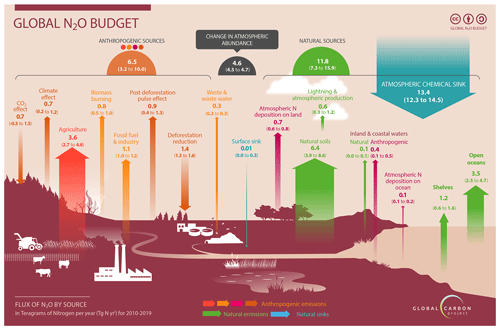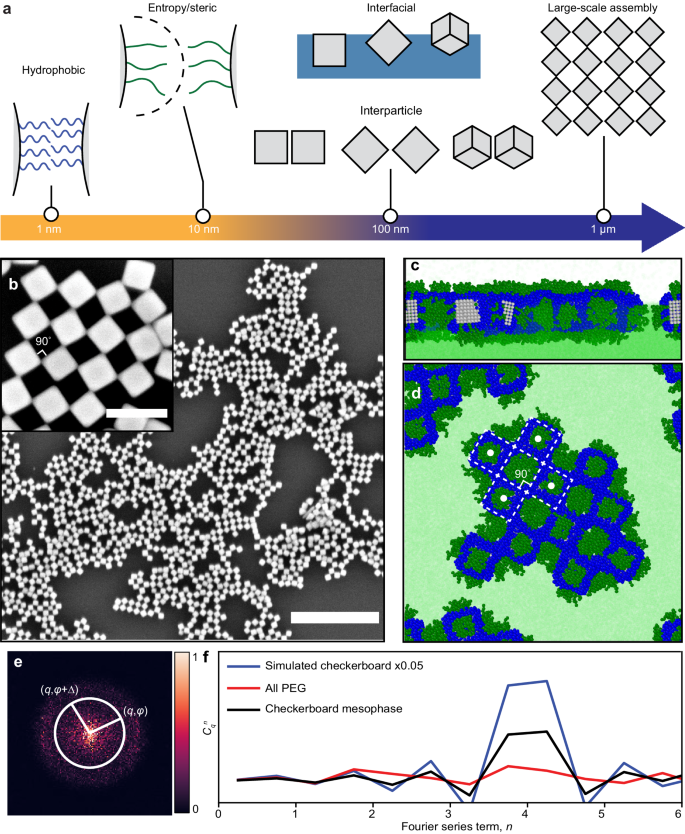2024-06-12 カリフォルニア大学サンディエゴ校(UCSD)
<関連情報>
- https://today.ucsd.edu/story/study-finds-nitrous-oxide-emissions-grew-40-over-40-years-accelerating-climate-change
- https://essd.copernicus.org/articles/16/2543/2024/
世界の亜酸化窒素収支(1980-2020年) Global nitrous oxide budget (1980–2020)
Hanqin Tian, Naiqing Pan, Rona L. Thompson, Josep G. Canadell, Parvadha Suntharalingam, Pierre Regnier, Eric A. Davidson, Michael Prather, Philippe Ciais, Marilena Muntean, Shufen Pan, Wilfried Winiwarter, Sönke Zaehle, Feng Zhou, Robert B. Jackson, Hermann W. Bange, Sarah Berthet, Zihao Bian, Daniele Bianchi, Alexander F. Bouwman, Erik T. Buitenhuis, Geoffrey Dutton, Minpeng Hu, Akihiko Ito, Atul K. Jain, Aurich Jeltsch-Thömmes, Fortunat Joos, Sian Kou-Giesbrecht, Paul B. Krummel, Xin Lan, Angela Landolfi, Ronny Lauerwald, Ya Li, Chaoqun Lu, Taylor Maavara, Manfredi Manizza, Dylan B. Millet, Jens Mühle, Prabir K. Patra, Glen P. Peters, Xiaoyu Qin, Peter Raymond, Laure Resplandy, Judith A. Rosentreter, Hao Shi, Qing Sun, Daniele Tonina, Francesco N. Tubiello, Guido R. van der Werf, Nicolas Vuichard, Junjie Wang, Kelley C. Wells, Luke M. Western, Chris Wilson, Jia Yang, Yuanzhi Yao, Yongfa You, and Qing Zhu
Earth System Science Data Published:11 Jun 2024
DOI:https://doi.org/10.5194/essd-16-2543-2024

Abstract
Nitrous oxide (N2O) is a long-lived potent greenhouse gas and stratospheric ozone-depleting substance that has been accumulating in the atmosphere since the preindustrial period. The mole fraction of atmospheric N2O has increased by nearly 25 % from 270 ppb (parts per billion) in 1750 to 336 ppb in 2022, with the fastest annual growth rate since 1980 of more than 1.3 ppb yr−1 in both 2020 and 2021. According to the Sixth Assessment Report of the Intergovernmental Panel on Climate Change (IPCC AR6), the relative contribution of N2O to the total enhanced effective radiative forcing of greenhouse gases was 6.4 % for 1750–2022. As a core component of our global greenhouse gas assessments coordinated by the Global Carbon Project (GCP), our global N2O budget incorporates both natural and anthropogenic sources and sinks and accounts for the interactions between nitrogen additions and the biogeochemical processes that control N2O emissions. We use bottom-up (BU: inventory, statistical extrapolation of flux measurements, and process-based land and ocean modeling) and top-down (TD: atmospheric measurement-based inversion) approaches. We provide a comprehensive quantification of global N2O sources and sinks in 21 natural and anthropogenic categories in 18 regions between 1980 and 2020. We estimate that total annual anthropogenic N2O emissions have increased 40 % (or 1.9 Tg N yr−1) in the past 4 decades (1980–2020). Direct agricultural emissions in 2020 (3.9 Tg N yr−1, best estimate) represent the large majority of anthropogenic emissions, followed by other direct anthropogenic sources, including fossil fuel and industry, waste and wastewater, and biomass burning (2.1 Tg N yr−1), and indirect anthropogenic sources (1.3 Tg N yr−1) . For the year 2020, our best estimate of total BU emissions for natural and anthropogenic sources was 18.5 (lower–upper bounds: 10.6–27.0) Tg N yr−1, close to our TD estimate of 17.0 (16.6–17.4) Tg N yr−1. For the 2010–2019 period, the annual BU decadal-average emissions for both natural and anthropogenic sources were 18.2 (10.6–25.9) Tg N yr−1 and TD emissions were 17.4 (15.8–19.20) Tg N yr−1. The once top emitter Europe has reduced its emissions by 31 % since the 1980s, while those of emerging economies have grown, making China the top emitter since the 2010s. The observed atmospheric N2O concentrations in recent years have exceeded projected levels under all scenarios in the Coupled Model Intercomparison Project Phase 6 (CMIP6), underscoring the importance of reducing anthropogenic N2O emissions. To evaluate mitigation efforts and contribute to the Global Stocktake of the United Nations Framework Convention on Climate Change, we propose the establishment of a global network for monitoring and modeling N2O from the surface through to the stratosphere. The data presented in this work can be downloaded from https://doi.org/10.18160/RQ8P-2Z4R (Tian et al., 2023).



